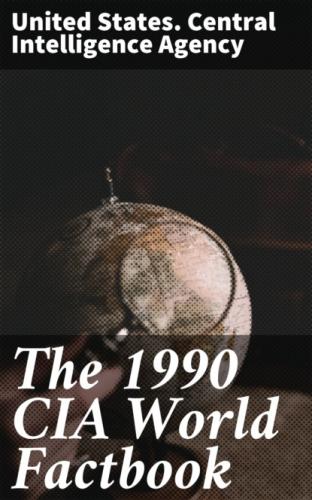Faryab, Ghazni, Ghowr, Helmand, Herat, Jowzjan, Kabol,
Kandahar, Kapisa, Konar, Kondoz, Laghman, Lowgar,
Nangarhar, Nimruz, Oruzgan, Paktia, Paktika,
Parvan, Samangan, Sar-e Pol, Takhar, Vardak, Zabol;
note—there may be a new province of Nurestan (Nuristan)
Independence: 19 August 1919 (from UK)
Constitution: adopted 30 November 1987
Legal system: has not accepted compulsory ICJ jurisdiction
National holiday: Anniversary of the Saur Revolution, 27 April (1978)
Executive branch: president, four vice presidents, prime minister, deputy prime minister, Council of Ministers (cabinet)
Legislative branch: bicameral National Assembly (Meli Shura) consists of an upper house or Senate (Sena) and a lower house or House of Representatives (Wolasi Jirgah)
Judicial branch: Supreme Court
Leaders:
Chief of State and Head of Government—President (Mohammad)
NAJIBULLAH (Ahmadzai) (since 30 November 1987); Chairman of the Council
of Ministers Executive Committee Soltan Ali KESHTMAND (since 21
February 1989); Prime Minister Fazil Haq KHALIQYAR (since 21 May 1990)
Political parties and leaders: only party—the People's Democratic Party of Afghanistan (PDPA) has two factions—the Parchami faction has been in power since December 1979 and members of the deposed Khalqi faction continue to hold some important posts mostly in the military and Ministry of Interior; nonparty figures hold some posts
Suffrage: universal, male ages 15–50
Elections: Senate—last held NA April 1988 (next to be held April 1991); results—PDPA is the only party; seats—(192 total, 115 elected) PDPA 115;
House of Representatives—last held NA April 1988 (next to be held April 1993); results—PDPA is the only party; seats—(234 total) PDPA 184, 50 seats reserved for opposition
Communists: the PDPA claims 200,000 members (1988)
Other political or pressure groups: the military and other branches of internal security have been rebuilt by the USSR; insurgency continues throughout the country; widespread anti-Soviet and antiregime sentiment and opposition on religious and political grounds
Member of: ADB, CCC, Colombo Plan, ESCAP, FAO, G-77, IAEA, IBRD, ICAO,
IDA, IDB—Islamic Development Bank, IFAD, IFC, ILO, IMF, INTELSAT, ITU, NAM, UN,
UNESCO, UPU, WFTU, WHO, WMO, WTO, WSG; suspended from OIC in January 1980
Diplomatic representation: Minister-Counselor, Charge d'Affaires MIAGOL; Chancery at 2341 Wyoming Avenue NW, Washington DC 20008; telephone (202) 234–3770 or 3771; US—Charge d'Affaires (vacant); Embassy at Ansari Wat, Wazir Akbar Khan Mina, Kabul; telephone 62230 through 62235 or 62436; note—US Embassy in Kabul was closed in January 1989
Flag: three equal horizontal bands of black (top), red, and green with the national coat of arms superimposed on the hoist side of the black and red bands; similar to the flag of Malawi which is shorter and bears a radiant, rising, red sun centered in the black band
- Economy Overview: Fundamentally, Afghanistan is an extremely poor, landlocked country, highly dependent on farming (wheat especially) and livestock raising (sheep and goats). Economic considerations, however, have played second fiddle to political and military upheavals, including the nine-year Soviet military occupation (ended 15 February 1989) and the continuing bloody civil war. Over the past decade, one-third of the population has fled the country, with Pakistan sheltering some 3 million refugees and Iran perhaps 2 million. Another 1 million have probably moved into and around urban areas within Afghanistan. Large numbers of bridges, buildings, and factories have been destroyed or damaged by military action or sabotage. Government claims to the contrary, gross domestic product almost certainly is lower than 10 years ago because of the loss of labor and capital and the disruption of trade and transport. Official claims indicate that agriculture grew by 0.7% and industry by 3.5% in 1988.
GDP: $3 billion, per capita $200; real growth rate 0% (1989 est.)
Inflation rate (consumer prices): over 50% (1989 est.)
Unemployment rate: NA%
Budget: revenues NA; expenditures $646.7 million, including capital expenditures of $370.2 million (FY87 est.)
Exports: $512 million (f.o.b., FY88); commodities—natural gas 55%, fruits and nuts 24%, handwoven carpets, wool, cotton, hides, and pelts; partners—mostly USSR and Eastern Europe
Imports: $996 million (c.i.f., FY88); commodities—food and petroleum products; partners—mostly USSR and Eastern Europe
External debt: $1.8 billion (December 1989 est.)
Industrial production: growth rate 6.2% (FY89 plan)
Electricity: 480,000 kW capacity; 1,470 million kWh produced, 100 kWh per capita (1989)
Industries: small-scale production of textiles, soap, furniture, shoes, fertilizer, and cement; handwoven carpets; natural gas, oil, coal, copper
Agriculture: largely subsistence farming and nomadic animal husbandry; cash products—wheat, fruits, nuts, karakul pelts, wool, mutton
Illicit drugs: an illicit producer of opium poppy and cannabis for the international drug trade; world's second largest opium producer (after Burma) and a major source of hashish
Aid: US commitments, including Ex-Im (FY70–88), $265 million; Western (non-US) countries, ODA and OOF bilateral commitments (1970–87), $419 million; OPEC bilateral aid (1979–89), $57 million; Communist countries (1970–88), $4.1 billion
Currency: afghani (plural—afghanis); 1 afghani (Af) = 100 puls
Exchange rates: afghanis (Af) per US$1—50.6 (fixed rate since 1982)
Fiscal year: 21 March-20 March
- Communications
Railroads: 9.6 km (single track) 1.524-meter gauge from Kushka (USSR) to
Towraghondi and 15.0 km from Termez (USSR) to Kheyrabad transshipment
point on south bank of Amu Darya
Highways: 21,000 km total (1984); 2,800 km hard surface, 1,650 km bituminous-treated gravel and improved earth, 16,550 km unimproved earth and tracks
Inland waterways: total navigability 1,200 km; chiefly Amu Darya, which handles steamers up to about 500 metric tons
Pipelines: petroleum, oil, and lubricants pipelines—USSR to Bagram and USSR to Shindand; natural gas, 180 km
Ports: Shir Khan and Kheyrabad (river ports)
Civil air: 2 TU-154, 2 Boeing 727, assorted smaller transports
Airports: 38 total, 34 usable; 9 with permanent-surface runways; none with runways over 3,659 m; 10 with runways 2,440–3,659 m; 15 with runways 1,220–2,439 m
Telecommunications: limited telephone, telegraph, and radiobroadcast services; television introduced in 1980; 31,200 telephones; stations—5 AM, no FM, 1 TV; 1 satellite earth station
- Defense Forces
Branches: Armed Forces (Army; Air and Air Defense Forces); Border
Guard Forces; National Police Force (Sarandoi); Ministry of
State Security (WAD); Tribal Militia
Military manpower: males 15–49, 3,880,124; 2,080,725 fit for military service; 168,021 reach military age (22) annually
Defense expenditures: 9.1% of GDP (1984)
——————————————————————————
